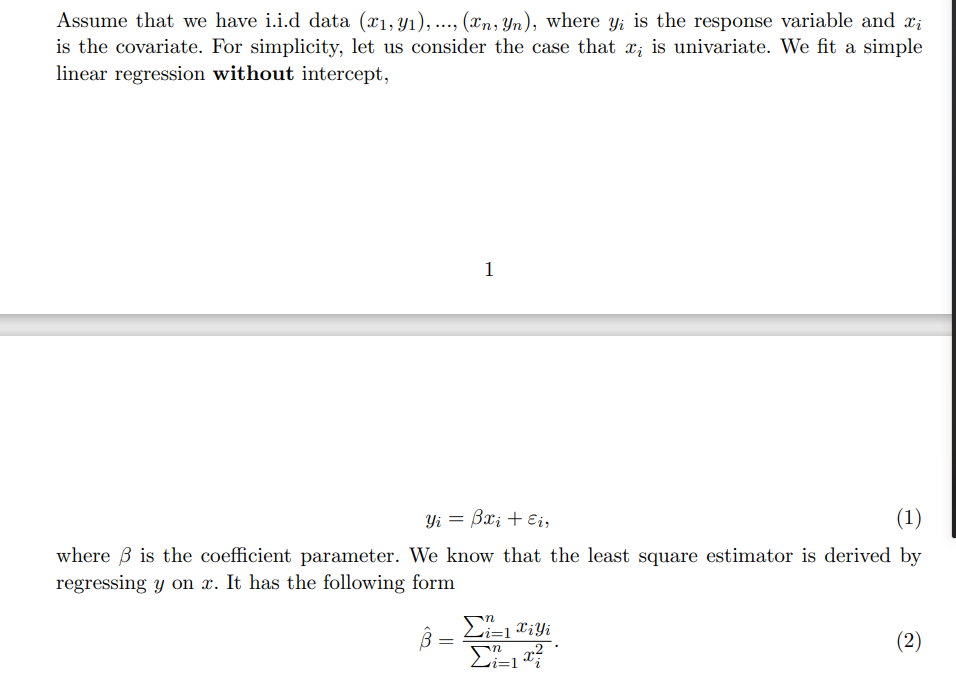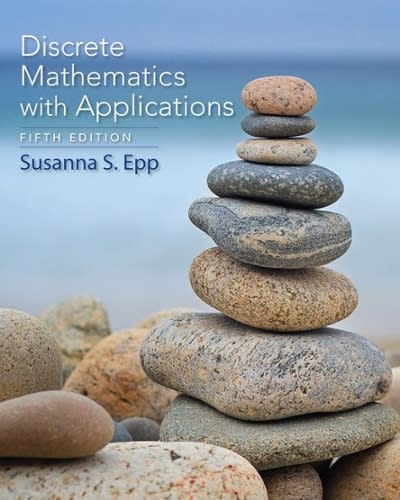
A few year ago, a professor from CALS asked me the following question about the model (1) (this is real). What happens if we regress x on y (rather than y on x)? Would the least square estimate for the regression of x onto y be a good estimate of 1/B? We will address his/her questions in the following two steps. (a) Conduct a simulation in R. We first generate n = 500 data points (x1, y1), ..., (In, yn) from (1). You can choose the distribution of r, & and the value of 3 by yourself. Given the data (X1, y1), ..., (In, Un), regress x on y. You may try Im(x~y-1,data) or something similar. We record the least square estimate of the coefficient. We now repeat the process 100 times, that is we regenerate data from the same setup and compute the estimate of the coefficient. To do this, you may need to write a for loop. Now, we have 100 estimates of the coefficient. Finally, we can compare the mean of the 100 estimates of the coefficient with 1/B. Please answer the professor's question: Would the coefficient estimate for the regression of x onto y be a good estimate of 1/B in the model (1)? (Please note that your answer could be sensitive to how you generate the data. In stati- stics, we often consider the so-called sensitivity analysis. That is you can vary the setting and parameters in the data generating process and see if your conclusion still holds or not) (b) Please provide a proof to show whether the coefficient estimate for the regression of r onto y is a consistent estimator of 1/B. For this question, you can start from the least square formula in (2). (Hint: The proof needs the law of large numbers to show the convergence of the estimator. )Assume that we have i.i.d data (1:1,y1], ..., {mmyn}, where y:- is the response variable and x;- is the oovariate. For simplicity, let us consider the case that as; is univariate. We t a simple linear regression without intercept, 3% = 353,: + 51': [1) where ,8 is the eoeflieient parameter- We know that the least square estimator is derived by regressing 3,: on 2:. It has the following form * Z; mgyg '9 = z [2)









